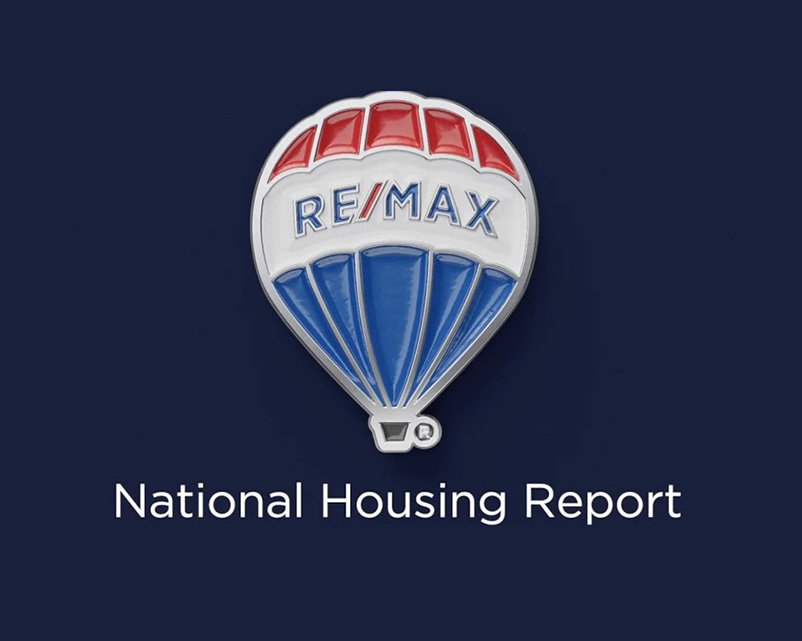Home Prices Ease Amid Declining New Listings, Sales, Inventory
Posting the lowest Median Sales Price in eight months, November home sales dropped from October levels and the number of homes for sale fell slightly.
Indicative of the usual year-end slowdown, home sales in November dropped by 9.8% compared to October and declined 6.5% versus the same period last year. This decline can also be attributed to rising interest rates most of this year and last. Interest rates have decreased over the last two months, which could result in more activity in the market.
The number of homes for sale changed slightly – dropping 1.6% from October and declining 2.6% compared to November 2022.
Across the 52 metro areas surveyed, homes sold for a median price of $405,000, which was $5,000 less than in October but $13,000 higher than in November 2022. New listings, though up 1.5% year over year, were down 19.1% from October.
“Although November results are in line with trends we’ve seen this year, there’s reason to think 2024 could be more active, especially with prices and interest rates coming down a bit recently,” said Nick Bailey, President and CEO of RE/MAX, LLC. “When we look at the national picture, it’s a collection of local snapshots, each with different conditions. As the report shows, new listings in a few markets, including Omaha and Orlando, were up more than 25% year over year, while they decreased in others. So, while the results tell an overall story, the key for homebuyers and sellers is to work with a local real estate agent who can speak to the unique local conditions.”
Steve Silcock, Broker/Owner of RE/MAX Heritage in Clermont, FL said, “November inventory in the Orlando area increased for the sixth month in a row to bump up months’ supply to a level not seen since January 2019. But we are still well below what many consider to be a balanced market, and median home prices are down slightly. However, December activity to date looks promising, especially in our retirement markets, and considering the recent drop in interest rates and the change in tone from the Federal Reserve, we are really looking forward to what we hope will be a strong and exciting 2024.”
Other notable metrics:
• Homes sold were on the market an average of 40 days – four days longer than in October and one day more than in November 2022.
• Homes sold in November for an average of 99% of the listing price – the same as in October and up from 98% in November 2022.
• Months’ supply of inventory in November was 2.6, larger than 2.3 in October and 2.5 in November 2022.
Highlights and local market metrics for November include:
New Listings
Of the 52 metro areas surveyed in November 2023, the number of newly listed homes was down 19.1% compared to October 2023, and up 1.5% compared to November 2022. The markets with the biggest decrease in year-over-year new listings percentage were Anchorage, AK at -20.3%, Birmingham, AL at -12.7%, and Honolulu, HI at -11.5%. The markets with the biggest year-over-year increase in new listings percentage were Omaha, NE at +33.2%, Burlington, VT at +25.9%, and Orlando, FL at +25.2%.
Closed Transactions
Of the 52 metro areas surveyed in November 2023, the overall number of home sales is down 9.8% compared to October 2023, and down 6.5% compared to November 2022. The markets with the biggest decrease in year-over-year sales percentage were Burlington, VT at -19.1%, Portland, OR at -17.1%, and Seattle, WA at -15.9%. The markets with the biggest increase in year-over-year sales percentage were Manchester, NH at +9.2%, Omaha, NE at +6.5%, and Orlando, FL at +4.9%.
Median Sales Price – Median of 52 metro area prices
In November 2023, the median of all 52 metro area sales prices was $405,000, down 1.2% compared to October 2023, and up 3.3% from November 2022. The markets with the biggest year-over-year decrease in median sales price were San Antonio, TX at -5.7%, Coeur d’Alene, ID at -3.7%, and New Orleans, LA at -3.6%. The markets with the biggest year-over-year increase in median sales price were Trenton, NJ at +15.5%, Des Moines, IA at +15.1%, and San Diego, CA at +12.7%.
Close-to-List Price Ratio – Average of 52 metro area prices
In November 2023, the average close-to-list price ratio of all 52 metro areas in the report was 99%, flat compared to October 2023, and up from 98% November 2022. The close-to-list price ratio is calculated by the average value of the sales price divided by the list price for each transaction. When the number is above 100%, the home closed for more than the list price. If it’s less than 100%, the home sold for less than the list price. The metro areas with the lowest close-to-list price ratio were a three-way tie between Bozeman, MT, Coeur d’Alene, ID, and Miami, FL at 95%. The metro areas with the highest close-to-list price ratios were Hartford, CT at 103%, followed by a tie between San Francisco, CA and Trenton, NJ at 102%.
Days on Market – Average of 52 metro areas
The average days on market for homes sold in November 2023 was 40, up four days compared to the average in October 2023, and up one day compared to November 2022. The metro areas with the lowest days on market were Baltimore, MD at 13, Washington, DC at 15, followed by a tie between Philadelphia, PA and Trenton, NJ at 16. The highest days on market averages were in Fayetteville, AR at 86, Coeur d’Alene, ID at 80, and Bozeman, MT at 71. Days on market is the number of days between when a home is first listed in an MLS and a sales contract is signed.
Months’ Supply of Inventory – Average of 52 metro areas
The number of homes for sale in November 2023 was down 1.6% from October 2023 and down 2.6% from November 2022. Based on the rate of home sales in November 2023, the months’ supply of inventory was 2.6, up compared to 2.3 in October 2023, and 2.5 in November 2022. In November 2023, the markets with the lowest months’ supply of inventory were Trenton, NJ at 0.8, Hartford, CT at 1.0, followed by a tie between Manchester, NH and Seattle, WA at 1.1. The markets with the highest months’ supply of inventory were San Antonio, TX at 5.3, followed by a tie between Bozeman, MT and Miami, FL at 4.8.
About the RE/MAX Network
As one of the leading global real estate franchisors, RE/MAX, LLC is a subsidiary of RE/MAX Holdings (NYSE: RMAX) with more than 140,000 agents in over 9,000 offices and a presence in more than 110 countries and territories. Nobody in the world sells more real estate than RE/MAX, as measured by residential transaction sides. RE/MAX was founded in 1973 by Dave and Gail Liniger, with an innovative, entrepreneurial culture affording its agents and franchisees the flexibility to operate their businesses with great independence. RE/MAX agents have lived, worked and served in their local communities for decades, raising millions of dollars every year for Children’s Miracle Network Hospitals® and other charities. To learn more about RE/MAX, to search home listings or find an agent in your community, please visit www.remax.com. For the latest news about RE/MAX, please visit news.remax.com.
Report Details
The RE/MAX National Housing Report is distributed monthly on or about the 15th. The Report is based on MLS data for the stated month in 52 metropolitan areas, includes single-family residential property types, and is not annualized. For maximum representation, most of the largest metro areas in the country are represented, and an attempt is made to include at least one metro area in almost every state. Metro areas are defined by the Core Based Statistical Areas (CBSAs) established by the U.S. Office of Management and Budget.
Definitions
Closed Transactions are the total number of closed residential transactions during the given month. Months Supply of Inventory is the total number of residential properties listed for sale at the end of the month (current inventory) divided by the number of sales contracts signed (pending listings) during the month. Where “pending” data is unavailable, an inferred pending status is calculated using closed transactions. Days on Market is the average number of days that pass from the time a property is listed until the property goes under contract. Median Sales Price for a metro area is the median sales price for closed transactions in that metro area. The nationwide Median Sales Price is calculated at the nationwide aggregate level using all sale prices from the included metro areas. The Close-to-List Price Ratio is the average value of the sales price divided by the list price for each closed transaction.
MLS data is provided by Seventy3, LLC, a RE/MAX Holdings company. While MLS data is believed to be reliable, it cannot be guaranteed. MLS data is constantly being updated, making any analysis a snapshot at a particular time. Every month, the previous period’s data is updated to ensure accuracy over time. Raw data remains the intellectual property of each local MLS organization.

